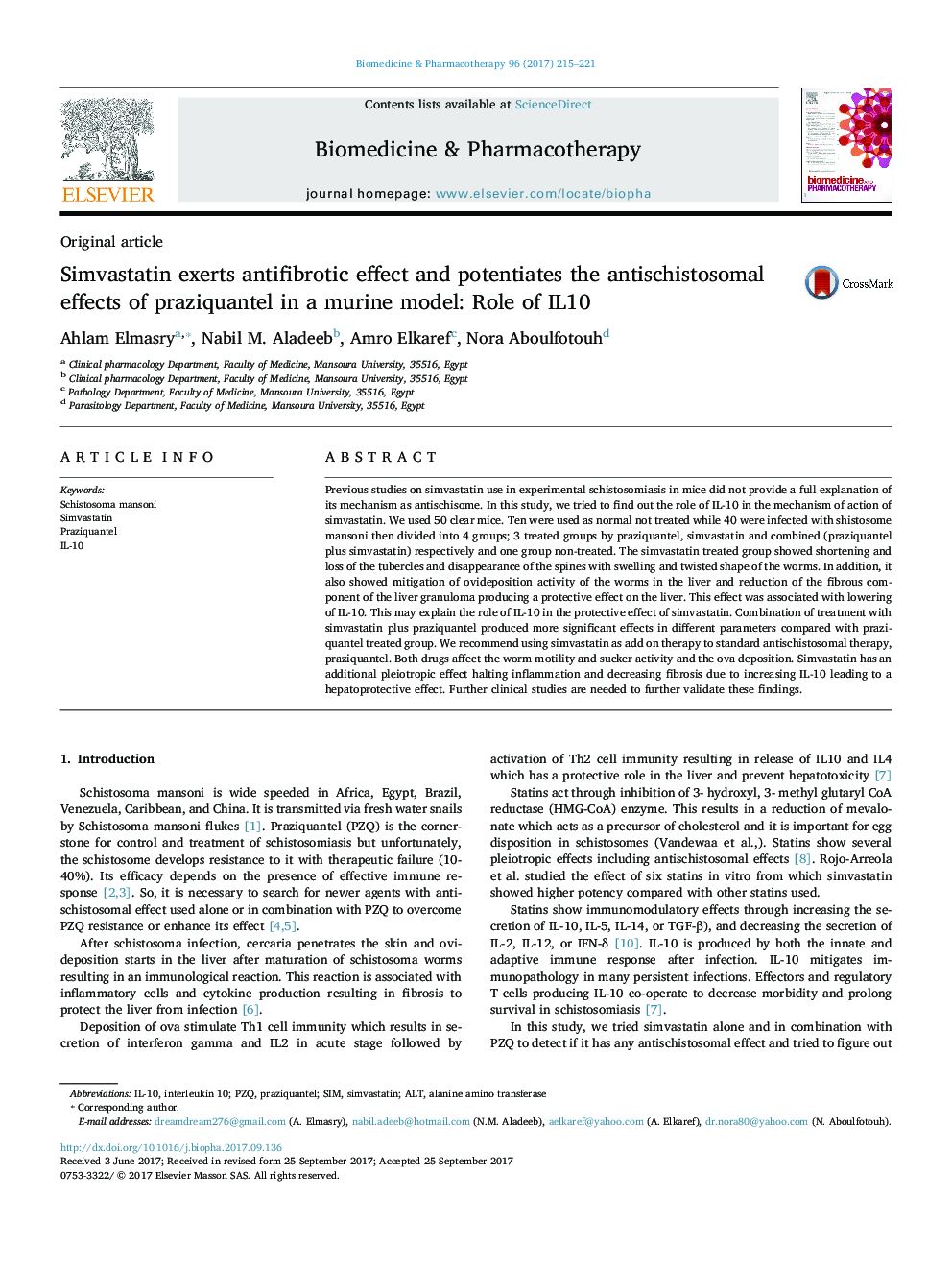| Article ID | Journal | Published Year | Pages | File Type |
|---|---|---|---|---|
| 5552446 | Biomedicine & Pharmacotherapy | 2017 | 7 Pages |
Previous studies on simvastatin use in experimental schistosomiasis in mice did not provide a full explanation of its mechanism as antischisome. In this study, we tried to find out the role of IL-10 in the mechanism of action of simvastatin. We used 50 clear mice. Ten were used as normal not treated while 40 were infected with shistosome mansoni then divided into 4 groups; 3 treated groups by praziquantel, simvastatin and combined (praziquantel plus simvastatin) respectively and one group non-treated. The simvastatin treated group showed shortening and loss of the tubercles and disappearance of the spines with swelling and twisted shape of the worms. In addition, it also showed mitigation of ovideposition activity of the worms in the liver and reduction of the fibrous component of the liver granuloma producing a protective effect on the liver. This effect was associated with lowering of IL-10. This may explain the role of IL-10 in the protective effect of simvastatin. Combination of treatment with simvastatin plus praziquantel produced more significant effects in different parameters compared with praziquantel treated group. We recommend using simvastatin as add on therapy to standard antischistosomal therapy, praziquantel. Both drugs affect the worm motility and sucker activity and the ova deposition. Simvastatin has an additional pleiotropic effect halting inflammation and decreasing fibrosis due to increasing IL-10 leading to a hepatoprotective effect. Further clinical studies are needed to further validate these findings.
Graphical abstractDownload high-res image (290KB)Download full-size image
